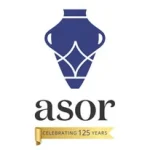
2024 PLENARY ADDRESS
Wednesday, November 20
7:00 – 8:30pm EST | Boston Park Plaza
** View the Plenary Recording Here
The 2024 Plenary Address will be given by Fikri Kulakoğlu (Professor of Archaeology at Ankara University, director of the Kültepe excavations since 2006 and an expert of Central Anatolian archaeology of the Bronze Age).
Dr. Fikri Kulakoğlu is an Ancient Near Eastern archaeologist and a lecturer at Ankara University. His current research interests include mainly “Early Bronze Age”, “Assyrian Trade Colony Period in Anatolia” and “Hittite Archaeology and Culture”.
He has participated in several major excavations in Anatolia such as Samsat, Acemhöyük, Kaman-Kalehöyük and Kültepe-Kanesh.
After Tahsin Özgüç, he was appointed director of the Kültepe excavations in 2006. Since 2009, the second-term excavations at Kültepe have focused mainly on the mound, confirming that a number of monumental structures adorned Kanesh and that an international trade network was already established in the Early Bronze Age. The new research strategy at Kültepe is based on a multidisciplinary approach and cooperation, open to all disciplines willing to collaborate, either to contribute to the understanding of the site or to test their own modalities.
Transition from Early Bronze Age to Middle Bronze Age at Kültepe: Architecture, Figurines and Seals
Kültepe comprises a mound that is twenty-one meters high and five hundred and fifty meters wide. It also includes a Lower Town settlement known as the ‘karum of Kanesh’, which has a diameter of at least 2.5 km, although it is not yet fully defined. The mound exhibits a long cultural sequence from the Late Chalcolithic Age (BC 4000) until the late Roman period, while the Lower Town contains only four well-defined levels.
The Lower Town was first settled in the beginning of the second millennium BC and abandoned after the Assyrian Trading Colony period (hereafter karum period). Kültepe is primarily known in the archaeological and philological worlds for its cuneiform Old Assyrian merchant’s archives. More than 23,000 cuneiform tablets and inscribed documents were discovered in the merchants’ houses located in the lower city, with fewer found in the mound proper. These artifacts revealed valuable insights into the social, political, and economic life of central Anatolia and Upper Mesopotamia during the 19th and 18th centuries BC.
Continuing research at Kültepe has shed light not only on the karum period but also on the earlier periods that were its foundation. The excavations carried out in recent years aimed to understand the political, cultural, and economic situation of Anatolia, particularly Kültepe, before the arrival of the Assyrian merchants.
The latest round of excavations at the site has revealed significant developments in the architectural and cultural sequence of the Early Bronze Age settlement. This provides answers to important questions. After the simple-plan units and relatively modest buildings of the Early Bronze I and II, monumental structures emerged during the IIIrd stage of the period. These structures reflect not only the architectural developments at Kültepe but also suggest social change in central Anatolia more broadly. The monumental buildings constructed during the third phase of the Early Bronze Age are completely different from the public buildings found in any other Anatolian centers, both with respect to their dimensions and their plan. Kültepe buildings were built according to a set plan, which differentiates them from the structures with eclectic layouts that were the characteristic up to this period. These buildings, on the other hand, are solid evidence of a powerful authority that was able to construct such monumental administrative compounds.
Recent excavations revealed a rich and unique collection full of stamp and cylinder seal impressions in the vicinity of these monumental buildings. Study of these seals will also enlighten the presence of earliest international trade established between Kültepe Kanesh and the other international centers in south Syria and Mesopotamia.
Not only the seals and seal impressions, but also the alabaster idols and figurines depicting only goddesses, unique to Kültepe, found in these buildings and their surroundings reflect the local religious belief system of the period. The richest group of idols, figurines and statuettes of this age in the Ancient Near East was discovered in the first room and the second large room which is still being excavated.
However, approximately in the middle of the last quarter of the 3rd millennium, all of these buildings were destroyed by a severe fire. In many places, the destruction was severe enough to destroy the walls down to their foundations or to melt all of the mudbrick walls that remained standing. According to the excavations, none of the monumental buildings spread over a large area survived the destruction.
After this destruction, the settlement was not abandoned, and new buildings were built on top of these ruins very soon afterwards. In fact, the new walls were built right on top of the ruined walls without leveling the ruined walls below. Nevertheless, the new buildings were constructed with a different building technique and even a different settlement scheme, indicating the end of the old period and the beginning of a new one.
This new settlement, which developed in at least 4 separate building levels, takes us back to the beginning of the 2nd millennium BC, the age when Assyrian merchants began to arrive in Anatolia.
These architectural finds and other small artifacts constitute the most solid data that can answer a major debate among archaeologists in the light of the Kültepe-Kanesh excavations in the center of Anatolia, where the question of how the transition from the Early Bronze Age to the Middle Bronze Age or the karum period was discussed.


